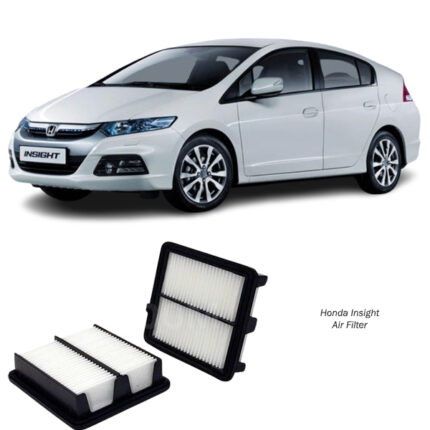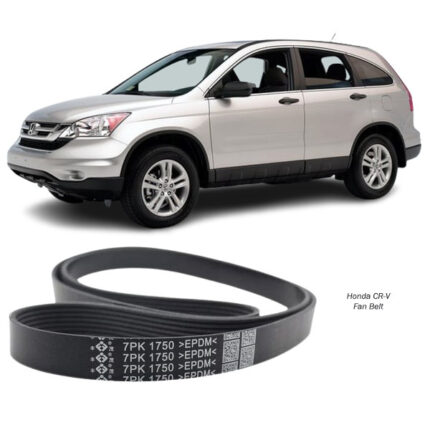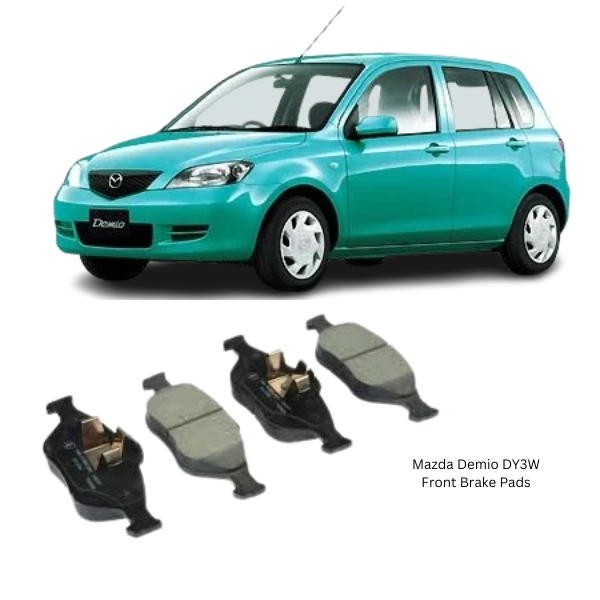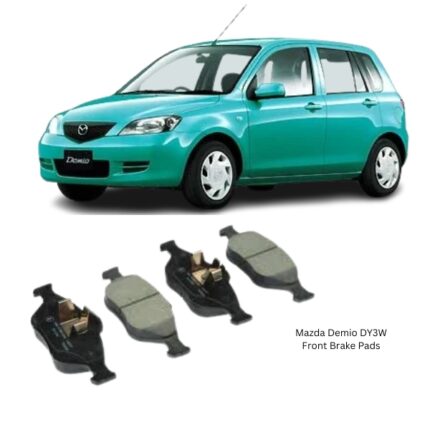Get Mazda Demio DY3W Front Brake Pad Kit D3120 in Kenya
The front brake pad kit is a crucial component of a vehicle’s braking system, playing a fundamental role in ensuring safe, effective, and reliable stopping power. As one of the most heavily stressed elements in any automobile, front brake pads undergo significant wear and must be carefully engineered to withstand intense friction, heat, and environmental factors. A brake pad kit typically includes a pair of brake pads (for both front wheels), anti-squeal shims, wear indicators, and often new hardware clips, all designed to restore factory-like braking performance.
Modern automotive safety depends heavily on the consistent operation of the braking system—particularly the front brakes, which typically handle 60% to 80% of the stopping force due to weight transfer during deceleration. This overview explores the design, function, materials, installation considerations, performance characteristics, and maintenance aspects of a front brake pad kit in detail.
1. Function of Front Brake Pads
Front brake pads are essential friction materials mounted within calipers that press against the front brake rotors when the driver applies the brake pedal. The resulting friction slows the rotation of the wheels, converting kinetic energy into heat and bringing the vehicle to a halt.
Since the front of the vehicle dives forward during braking, more of the vehicle’s mass shifts to the front axle, requiring the front brake pads to generate a higher degree of stopping power. This makes them more prone to wear and thermal stress compared to rear pads.
2. Components of a Front Brake Pad Kit
A complete front brake pad kit typically includes:
-
Two pairs of brake pads (for both front wheels).
-
Anti-noise shims or backing plates to reduce vibration and brake squeal.
-
Wear indicators (mechanical or electronic), alerting the driver when replacement is needed.
-
Hardware clips or abutment clips to secure the pads within the caliper bracket.
-
Grease packets or anti-seize compounds to lubricate moving parts.
These components are essential for ensuring the pads function smoothly, reduce noise, and maintain optimal safety.
3. Types of Front Brake Pads
Depending on the material composition, front brake pads are generally classified into three categories:
a) Ceramic Pads
Made from ceramic fibers, nonferrous metal particles, and bonding agents, ceramic pads offer quiet operation, low dust output, and excellent longevity. They are ideal for everyday driving.
b) Semi-Metallic Pads
Composed of steel wool, copper, iron, and graphite blended with resin, these pads provide superior braking performance and heat dissipation. They are suitable for high-load applications but may generate more noise and dust.
c) Organic or Non-Asbestos Organic (NAO) Pads
Made from rubber, glass, resins, and Kevlar, these are softer and quieter but wear faster and are less effective in extreme conditions.
Each material type influences performance factors such as stopping distance, rotor wear, heat tolerance, and braking noise.
4. Performance Characteristics
Front brake pad kits are designed to deliver consistent and safe performance across varying temperatures and road conditions. Key performance aspects include:
-
Initial Bite: The quick response of the pad when the pedal is first pressed.
-
Fade Resistance: The pad’s ability to maintain friction under continuous or high-speed braking.
-
Dust Production: The amount and color of brake dust created during normal use.
-
Pad Longevity: The distance or time before the pads wear to minimum thickness.
-
Noise and Vibration: Whether the pad generates squealing or pulsation during operation.
-
Compatibility: Matching with vehicle calipers and rotors for proper fitment.
Well-engineered front brake pads should deliver strong, fade-free braking with minimal wear on the rotor.
5. Heat Management
Friction between the brake pads and rotors generates extreme heat—sometimes exceeding 500°C (932°F) under heavy braking. A front brake pad kit must be capable of:
-
Withstanding high thermal loads without degrading.
-
Dispersing heat quickly to prevent fade and damage.
-
Maintaining consistent friction coefficients despite temperature changes.
Some high-performance or heavy-duty pads include slots or chamfers in their design to reduce heat buildup and eliminate gas or debris between the pad and rotor surface.
6. Installation Considerations
Proper installation of front brake pads is critical to safety and performance. The process generally includes:
-
Lifting the vehicle safely and removing the front wheels.
-
Removing the caliper and existing pads without damaging the brake hose.
-
Inspecting the rotors for scoring, warping, or wear, and resurfacing or replacing if needed.
-
Cleaning the caliper bracket, pins, and hardware.
-
Lubricating contact points, including caliper slides and back of the pads.
-
Installing the new pads, ensuring correct orientation and hardware fitment.
-
Reassembling the caliper, torquing bolts to manufacturer specs.
-
Performing a pad break-in (bedding) procedure, usually involving several moderate stops to condition the pad surface.
Improper installation may result in uneven wear, noise, brake drag, or reduced performance.
7. Benefits of a Quality Front Brake Pad Kit
A high-quality front brake pad kit offers numerous advantages:
-
Shorter stopping distances due to reliable high-friction material.
-
Reduced brake fade, even under high-load or repeated braking.
-
Quieter operation with integrated shims and vibration-dampening layers.
-
Extended rotor life, especially with rotor-friendly materials like ceramics.
-
Ease of installation with all necessary hardware included.
-
Improved safety, ensuring rapid response in emergencies.
Investing in a premium kit can significantly enhance driver confidence and vehicle control.
8. Maintenance and Lifespan
Front brake pads typically last between 30,000 and 70,000 kilometers, depending on driving style, terrain, and brake material. Maintenance includes:
-
Routine inspection of pad thickness and hardware condition.
-
Listening for warning sounds, like squealing (from wear indicators) or grinding (indicating metal-on-metal contact).
-
Checking brake fluid levels and quality.
-
Monitoring pedal feel for changes in responsiveness or vibration.
-
Inspecting rotors for scoring or heat marks.
Regular service and timely replacement extend the life of braking components and prevent costlier repairs.
9. Environmental and Safety Aspects
Modern front brake pads are increasingly developed with low-copper or copper-free formulations to reduce environmental impact. Brake pad dust, particularly from copper and metallic materials, contributes to water pollution and air quality issues. Regulatory changes are steering manufacturers toward eco-friendly alternatives without compromising safety.
From a safety perspective, the importance of front brake pads cannot be overstated. Properly functioning pads ensure that emergency stops, downhill braking, and high-speed deceleration are executed with precision and control.
10. Applications and Versatility
Front brake pad kits are available for a wide range of vehicles—from compact city cars to large SUVs, vans, and light commercial trucks. The right kit depends on:
-
Vehicle weight and load requirements
-
Driving conditions (urban vs. off-road vs. highway)
-
Performance expectations
-
Brake system type (standard, sport, or heavy-duty)
Whether for a daily driver or performance vehicle, selecting the appropriate front brake pad kit ensures optimal results.
Follow us on Facebook for more parts.




